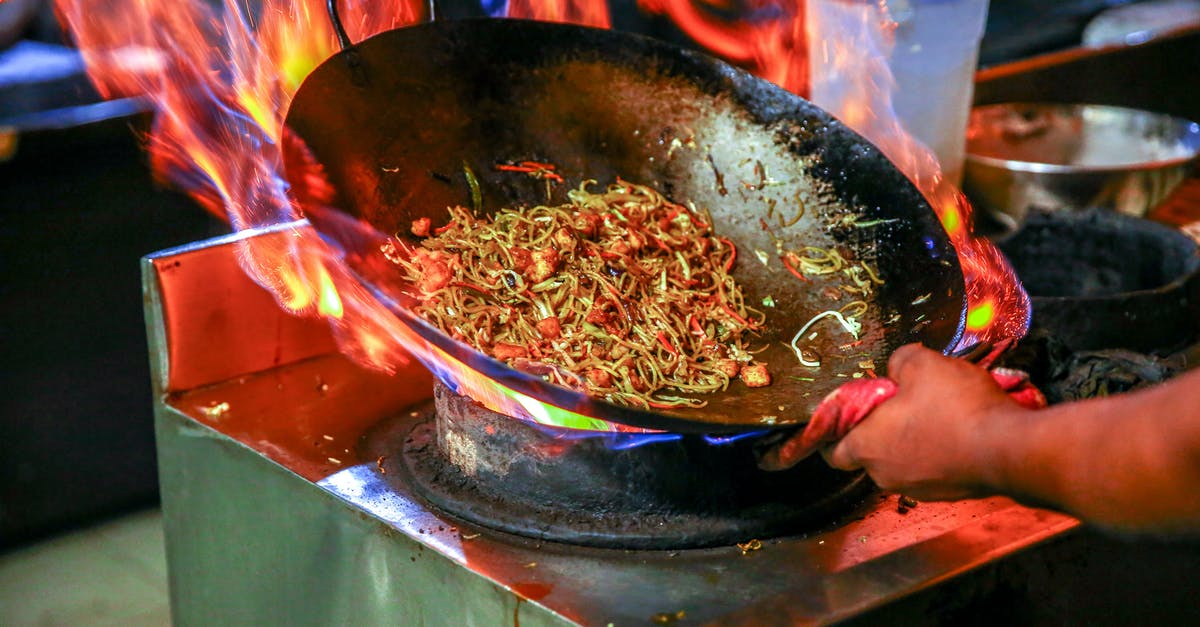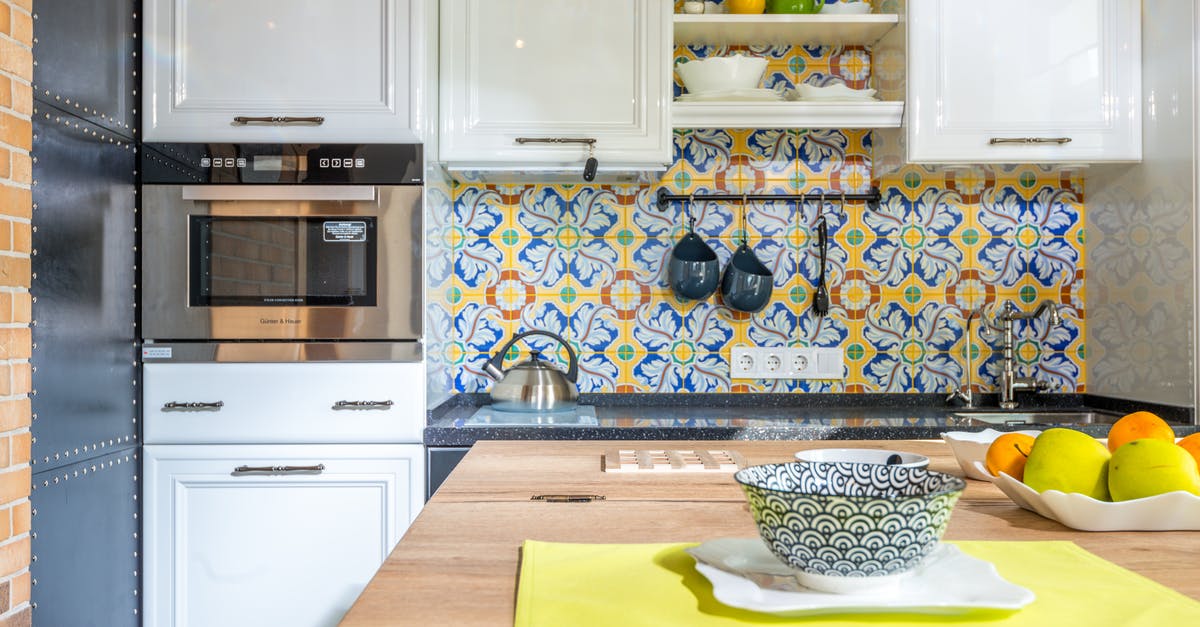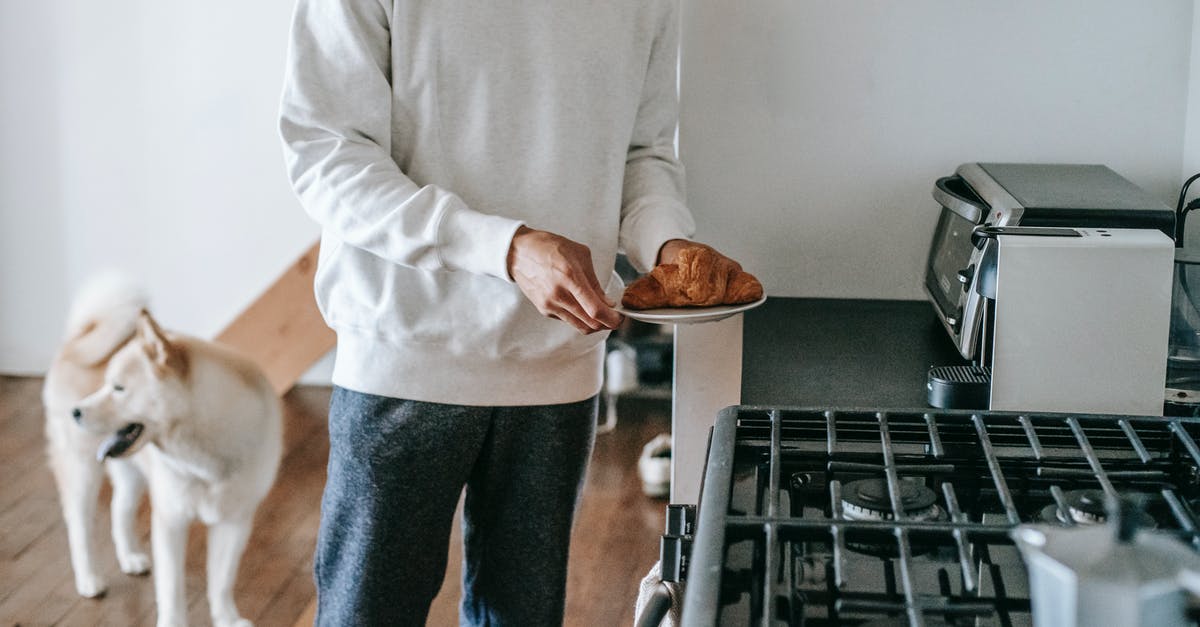Why does Chinese food reheats better on stove than in microwave?

Especially when there is sauce in the food. It seems the sauce heats less evenly in the microwave. I suspect the kind of flour used in the sauce is the problem but am not sure.
Best Answer
There are probably several factors which lead to the perception that chinese food heats less evenly in a microwave than on the stove top.
There are lots of types of Chinese food, but due to the mention of sauce on the original question, I am going to assume its a dish with meat and vegetables in a sauce, like (as often available in US Chinese restaurants), Kung Pao chicken or beef with broccoli. Since the liquid is thickened, and only part of the dish, little convection can occur--transfer of heat within the food itself will be by conduction unless the dish is stirred.
Contributing factors probably include:
- Microwaves excite polar (usually water, sugar, and fat) molecules directly, creating heat. However, the pattern of microwaves inside the oven cavity is not uniform due to wave interference, so different parts of the dish will be heated somewhat unevenly. This is why modern microwave ovens have rotating platforms.
- Fats seem to heat much more quickly than say, plain water, so parts of the dish with more fat (like meat pieces) may seem to heat faster.
- Microwaves only penetrate a few centimeters into the dish, heating the food at the outside of the food volume. The interior of the food, is heated through conduction or convection of heat from the outside of the food.
All of this leads to the main probable cause: less stirring. You are probably more likely to be actively stirring the food on the stovetop, where the heat only happens at the bottom, and may burn on the pan, thus distributing the heat throughout the dish.
With the microwave, stirring still is important due to all of the factors listed above, but you have to stop the cooking and open the oven to do it so it possibly doesnt' happen as much.
Truthfully, I find the microwave the superior method for reheating Chinese food. Try these suggestions to make it successful:
- Don't do it at full power for longer. By lowering the power (which really just does full power a proportion of the time, in very short intervals), you slow down the heating, which gives more time for conduction and convection to move heat through the dish, evening out the cooking.
- Reheat the food in a shallow, thin layer (like a wide soup or pasta bowl), rather than a more compact volume. This will let more of the food be exposed to the microwaves, heating more evenly.
- Stir a few times.
Pictures about "Why does Chinese food reheats better on stove than in microwave?"



Is it better to reheat on stove or microwave?
Reheating food on the stove is so much better than the microwave because it decreases the chances of your pasta dishes becoming dry, and it decreases splatter, which makes it easier to clean up.Is Chinese food good microwaved?
We've established that microwaving Chinese takeout in its to-go container is dicey, but there's more to this leftover etiquette than just safety: Reheating Chinese food in the microwave simply makes it taste bad. Who wants to eat overcooked noodles, soggy egg rolls, or rock-hard rice?What reheats well in microwave?
Foods to Reheat in the Microwave- Soups.
- Stews.
- Saut\xe9s and stir-fries.
- Steamed or boiled vegetables.
- Rice, pasta, and noodles.
- Casseroles.
Never Reheat Chinese Food In The Microwave Heres Why
More answers regarding why does Chinese food reheats better on stove than in microwave?
Answer 2
It depends on the dish. Reheating Mongolian beef or Kung Pao chicken in a microwave does not produce a better result than reheating on the stove, but reheating General Tso's chicken or sesame chicken does. The latter two turn soggy or slimy or both.
Why?
(My opinion, as I'm not really sure):
Have you ever put a piece of bread (or a sandwich) in the microwave too long and the bread gets soggy, slimy, and/or gummy? I think that's what's happening to dishes like General Tso's and sesame chicken, as both dishes (and other similar ones) involve meat being coated in flour/corn starch and then deep-fried (before being sauced). In a sense, these dishes are like bread-coated meat fried in oil and then sauced, and it's reheating that bread coating that makes them awful on reheat, like putting a sandwich in the microwave.
Mongolian beef and Kung Pao chicken are not coated in dough. Nor are they deep-fried. They reheat fine in a microwave. General Tso's and sesame chicken are coated and deep-fried, and they're always awful when reheated, in a microwave or otherwise. Reheating most fried food usually results in a soggy, slimy, gummy travesty, and I think (but don't know if) that's the issue here.
Sources: Stack Exchange - This article follows the attribution requirements of Stack Exchange and is licensed under CC BY-SA 3.0.
Images: Prince Photos, Max Vakhtbovych, Max Vakhtbovych, Zen Chung
